George White painted “the human form divine with beauty, grace, and delicacy” according to Doulton’s Art Director, Charles J. Noke. He also had the “unusual power of fixing the personality of his subject and caught the likeness which is more than could be said of many who profess to paint portraits.”
White was the chief painter of figure subjects at Doulton’s Burslem studio from 1885 until 1912. He specialized in themes from classical mythology, particularly maidens veiled in diaphanous dresses in soft, delicate colors. He studied in London at the Lambeth and South Kensington schools of art where he was influenced by celebrated Pre-Raphaelite artists such as Rossetti and Millais.
One of White’s early responsibilities at Doulton’s Burslem studio was recording the work of the leading artist’s designs in the GW pattern books. Vases by Fred Hancock, Henry Mitchell, and Harry Piper are among the sequence of GW numbers which began in 1888. No doubt the young White learned from these masters. Their designs were hand-painted on a matt ivory china body with printed outlines and raised in rich gold and enamels. George White kept these records until late 1889 when Robert Allen began a new sequence of numbers in the RA pattern books. Vases of this style received great acclaim at the Chicago exhibition of 1893.
George White was entrusted with painting several monumental Doulton vases for the Chicago World’s Fair in 1893, which was described as Henry Doulton’s greatest triumph. White was awarded a Diploma of Honorable Mention at Chicago for his exceptional contribution. His striking flow blue and gold exhibition vase symbolizing Spring is on display at WMODA. He also painted two of the prestigious Dante Vases for Chicago with scenes from Dante’s Divine Comedy. White painted another Dante Vase for the Paris exhibition of 1900 and another for the St. Louis exhibition of 1904 where he won a bronze medal.
White’s most spectacular exhibition piece was the Diana Vase which dominates the Royal Doulton gallery at WMODA. He collaborated with Fred Hancock on the decoration of Charles Noke’s masterpiece for the Paris exhibition of 1900 and his hand-painted panel depicts the story of Orpheus and Eurydice. Orpheus was the son of Apollo, the sun god, and was renowned for his lyre music which entranced all living things and even the trees and the rocks. He fell in love with the beautiful Eurydice and they lived happily until she was bitten by a snake and died. The sorrow and grief expressed by Orpheus in his music touched the gods and he was allowed to descend to Hades to see his wife. He was told he could take her from the underworld as long as he did not look at her before reaching the light. Impatiently, he glanced back in the shade and lost her forever.
White’s painting of Venus Arising from the Sea on the Love Vase was also acclaimed at the Paris exhibition and reprised for a smaller exhibition vase on display at WMODA. He continued to excel at the international exhibitions in Australia and New Zealand. At Christchurch in 1906 he won a gold medal and at the Auckland Exhibition of 1913-1914, he showed the magnificent Autumn Festival vase. For many years this Luscian Ware vase was in the collection of John Shorter, the Australasian agent, and is now at WMODA. Archive photographs show that White exhibited many major vases in Australia and New Zealand and some of his finest works have come to light in private collections down under. He was so highly regarded that one of his plate designs featured on a postage stamp in New Zealand during the Royal Doulton Exhibition in 1993.
George White’s vases reflect the styles popular at Doulton’s Burslem studio in the late 19th and early 20th century. In the early 1890s, he worked on the original ivory china body. In 1896, he turned his attention to the new Luscian ware perfected by John Slater, the first Art Director of the Burslem studio. This bone china body had a matching glaze which produced a soft painterly effect when the skillful blending of various colors sank into the velvety glaze after a succession of firings. Only the most talented artists could work in the Luscian technique which was ideally suited to White’s delicate painting style. In the early 1900s, he worked on some of the most prestigious vases. Charles J. Noke modeled many of the shapes and Robert Allen designed the ornamental embellishments with raised and chased gold decoration by Doulton’s gilders, such as Harry Skinner.
White’s subjects range from classical mythology to medieval romance. The story of Cupid and Psyche features many times in his work. He was much influenced by the French academic painter William-Adolphe Bouguereau whose idealized world in a photo-realistic style was very popular at the turn of the last century. On one beautiful vase, White depicts the moment when Psyche falls in love with Cupid as she gazes on him while he sleeps. A drop of oil from her lamp falls on him and wakes him and he flees into the night. After many trials and adversities, Psyche is granted immortality and ascends to live with the god of love on Mount Olympus.
Stories of love and desire pervade White’s work. Shakespeare’s tale of Romeo and Juliet inspired one of White’s most spectacular exhibition vases which is Arthur Wiener’s latest acquisition and is on its way to WMODA now. Another impressive vase in the museum depicts a young woman picking petals off a flower to determine whether her love is returned to the refrain ‘He loves me, he loves me not’. The object of her desire watches from behind the garden wall.
Symbols of beauty and love also abound in White’s art. Scenes of maidens feeding doves and swans represent grace and beauty. In Roman mythology, the swan was sacred to Venus, the goddess of love. One of White’s pencil drawings in the WMODA collection matches the Feeding the Swans vase on display in the Royal Doulton gallery. Another sketch for Summer Roses is reminiscent of a painting of the actress Ellen Terry by G. F. Watts and shows how the Doulton Studio was often influenced by the leading artists of the day. More of White’s original drawings are currently on display in the From Paper to Pottery exhibition curated by Christopher Evans at the World of Wedgwood together with his medal certificates. One of White’s watercolor studies of a squirrel was re-worked for an Aynsley plate design entitled Muriel executed in 1923. Over the years, several cabinet plates have been discovered with portraits of children who cannot be identified – perhaps of friends and family members. White was a skilled portraitist and was commissioned to paint several illustrious personalities, including Sir Henry Doulton.
White’s most successful designs were re-used on a variety of vases shapes and plaques. His Ancient Bard, an image of the Greek poet Homer singing the Iliad to a group of maidens, can be found on two styles of vases in the WMODA collection. The larger of the two was a gift to White’s friend and fellow artist Edward Raby, as indicated on the base. Occasionally White’s designs have been found on vases by other companies, such as Gibson & Company who made Windsor Ware. A Windsor Ware vase and jardinière are in the WMODA collection. There are also unmarked vases with White’s signature which are open to speculation. Hopefully, on-going research will throw more light on this talented but elusive artist.
Thank you to Christopher Evans for the photos of the George White certificates and watercolors.

George White
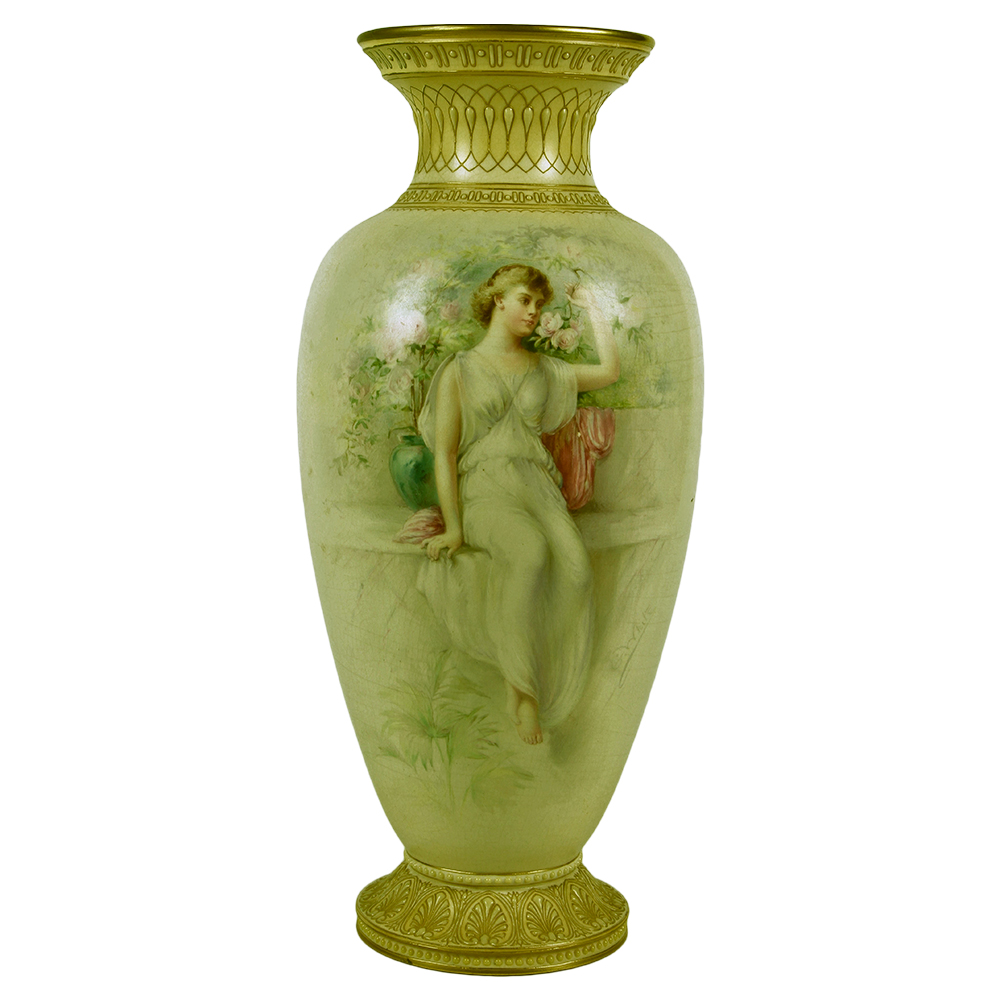
Doulton Burslem Maiden in Garden
by G. White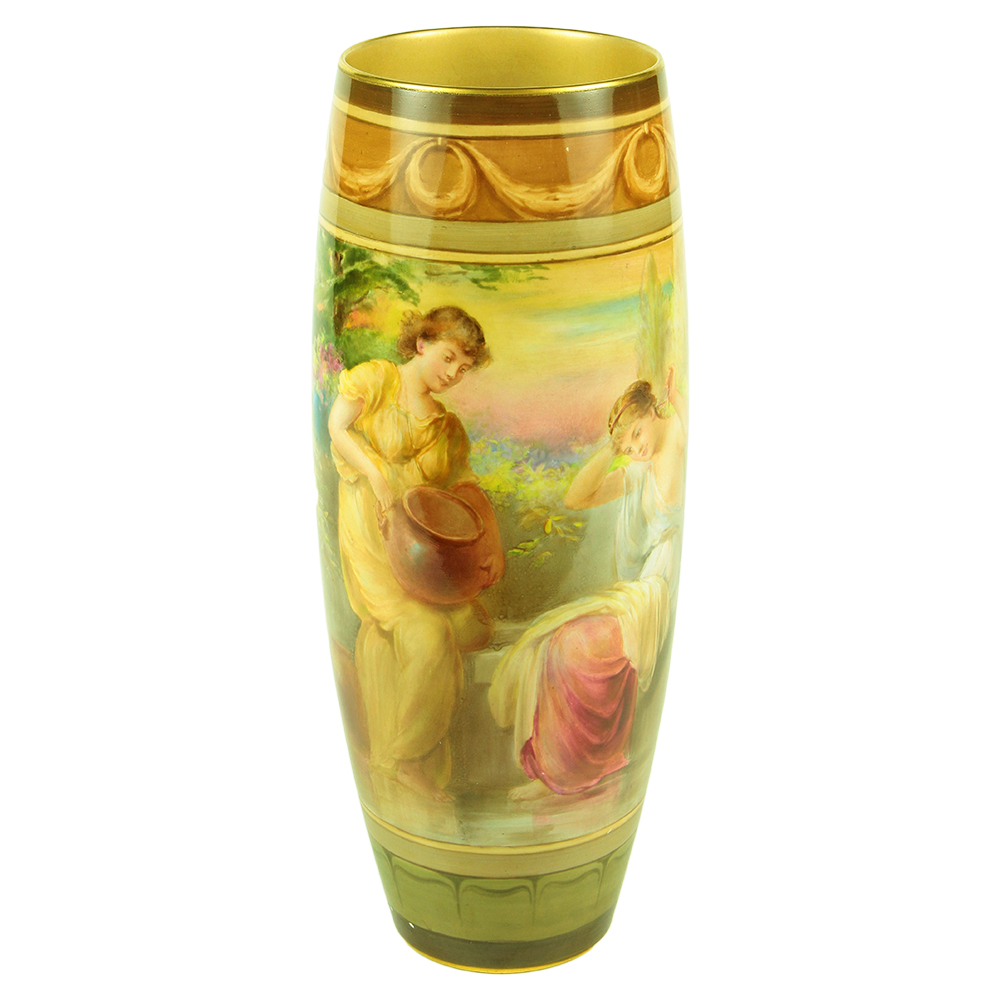
Doulton Burslem Luscian Maidens Bathing
by G. White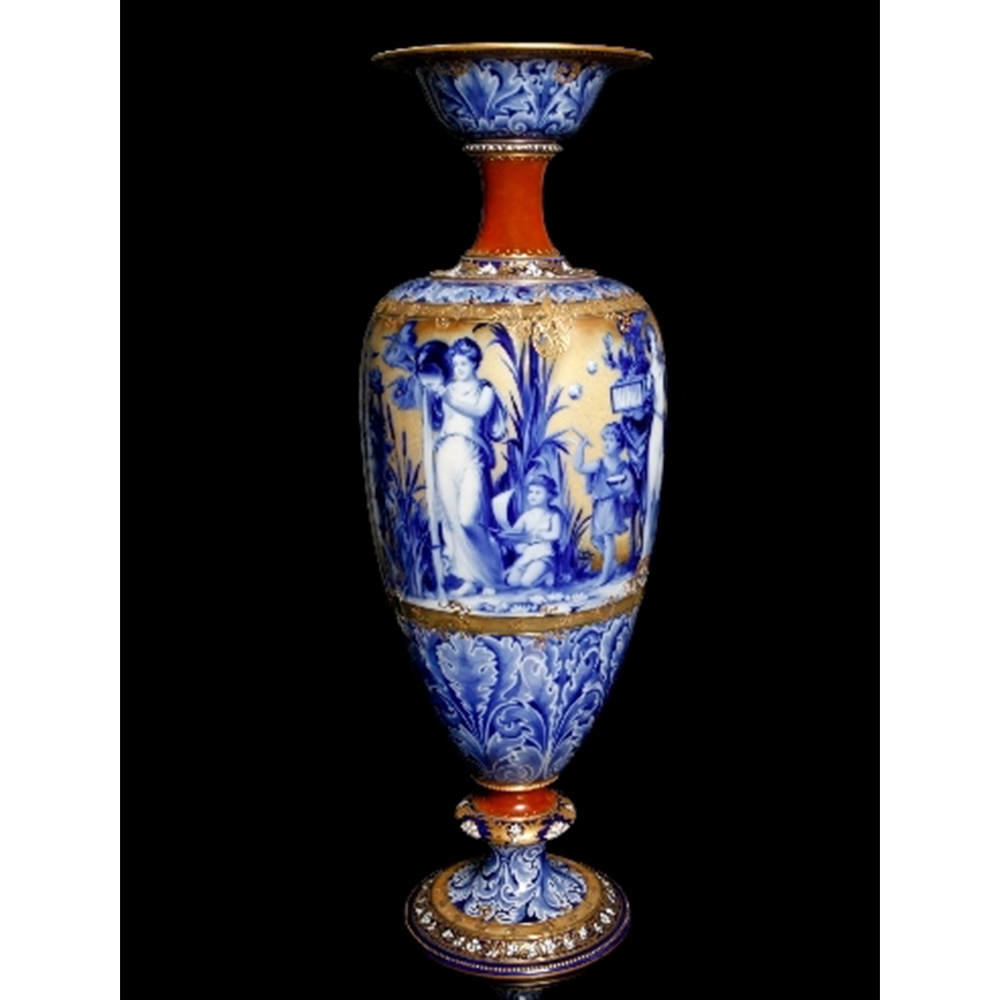
Doulton Burslem Spring Chicago Exhibition 1893
by G. White
Doulton pattern book Chicago Exhibition 1893

Doulton Burslem Dante Vase by C.J. Noke & G. White

Doulton Burslem Dante Vase by C.J. Noke & G. White
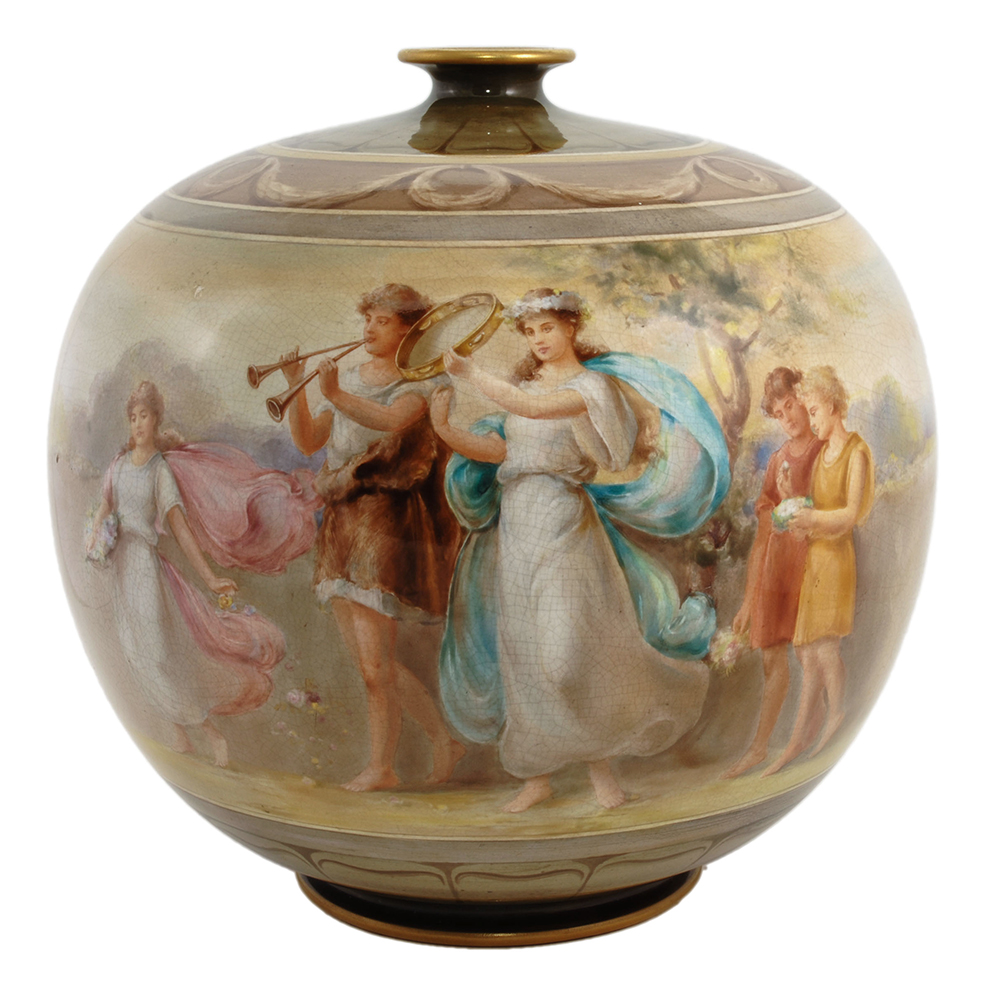
Doulton Burslem Luscian Arrival of Spring by G. White

Certificate of Honorable Mention from the Chicago Exhibition
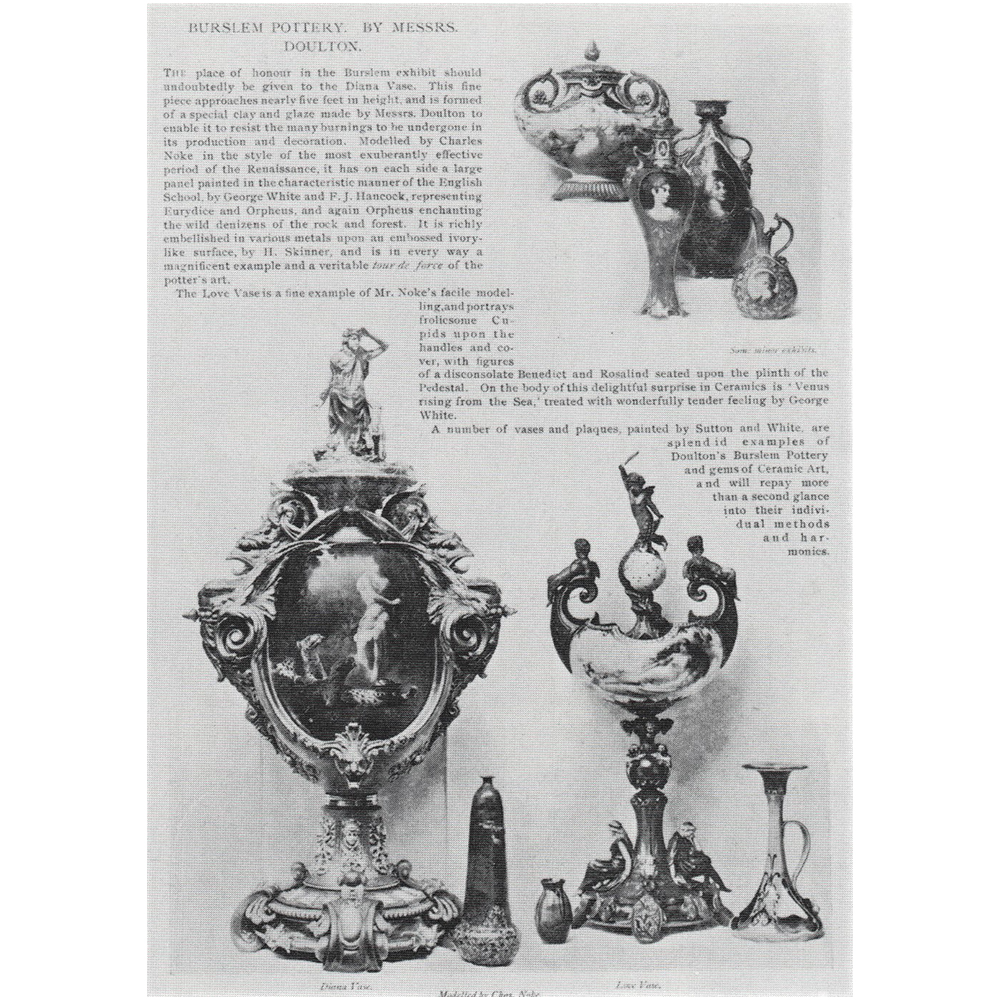
1900 Art Journal
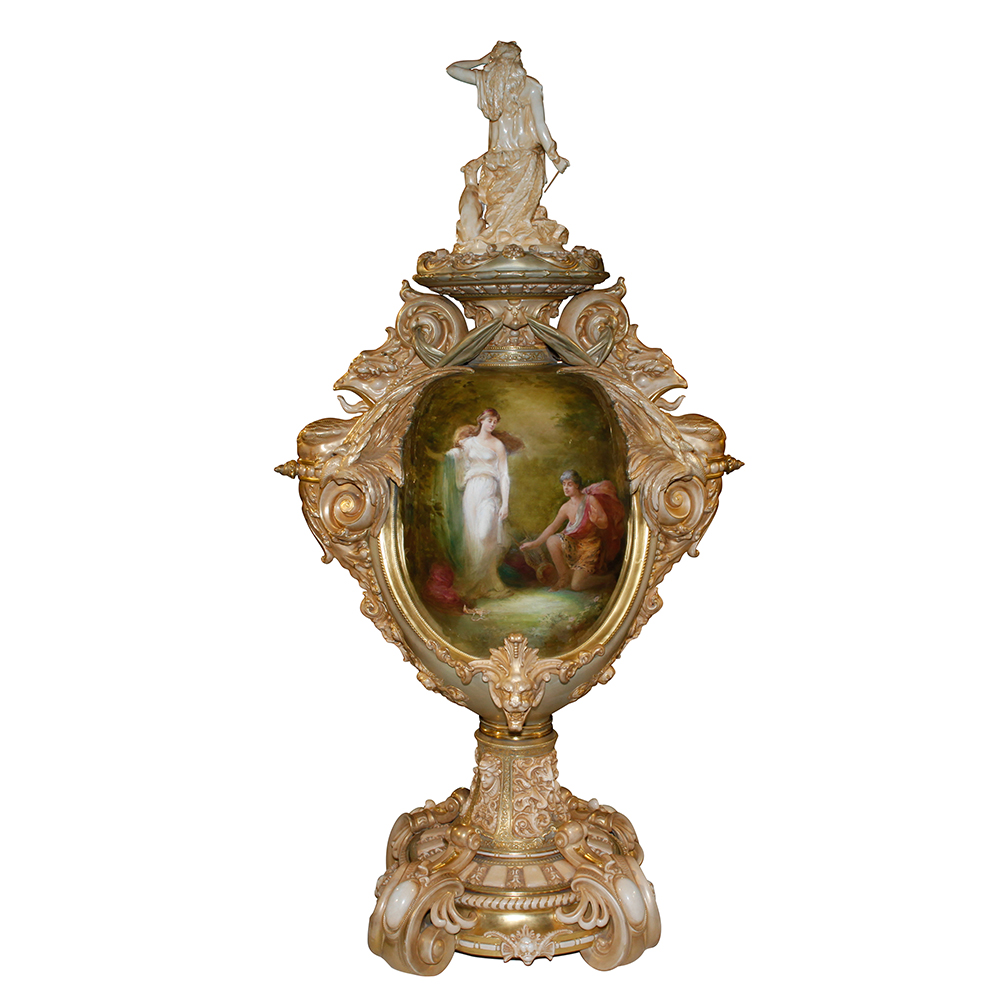
Doulton Burslem Diana Vase Paris Exhibition 1900
by C.J. Noke & G. White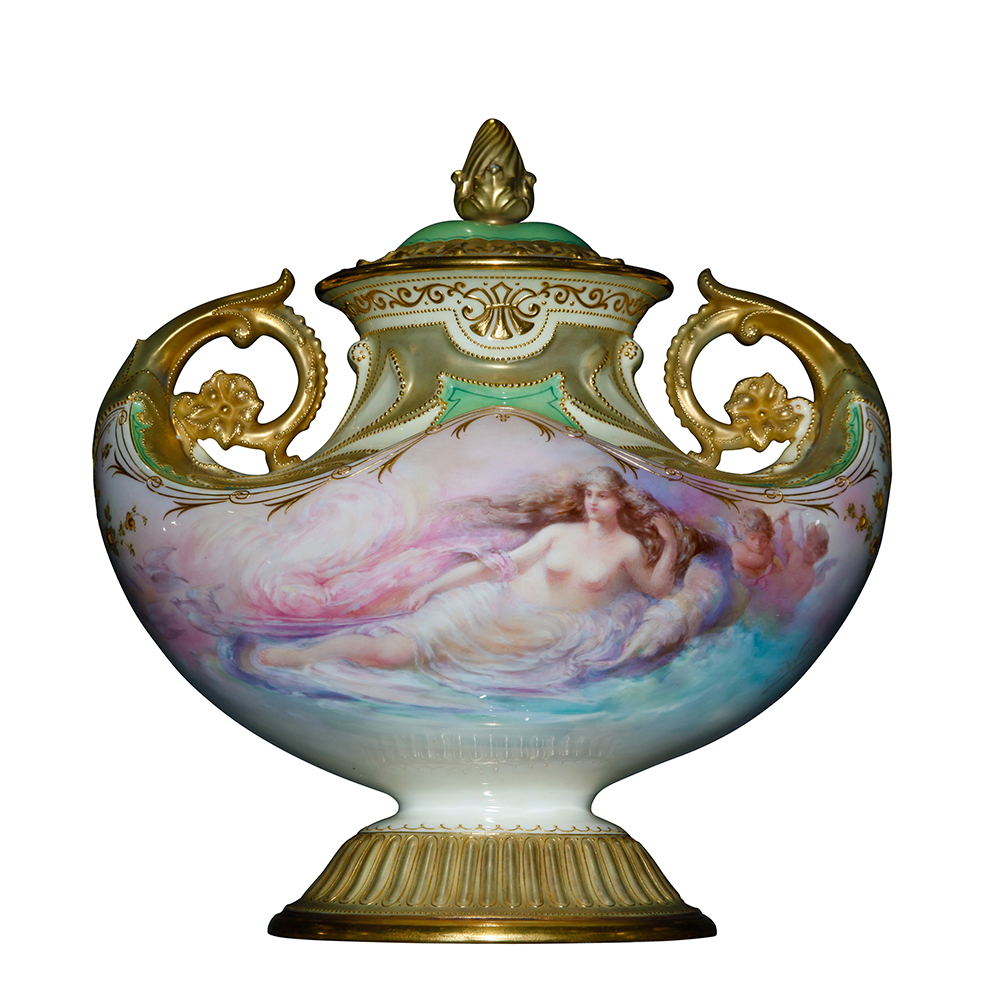
Doulton Burslem Venus Arising by G. White

St. Louis Medal Certificate

Doulton Burslem Coming of Spring by G. White
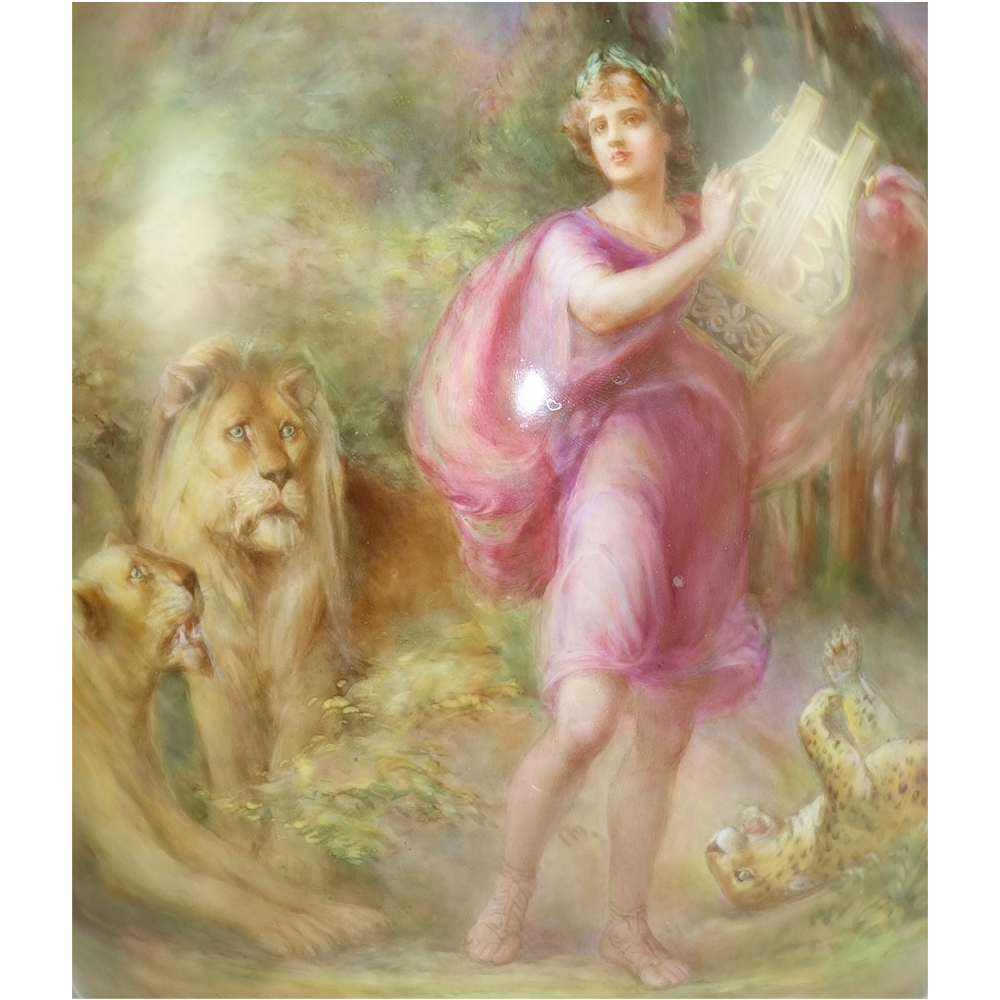
Detail of the Orpheus Urn by G. White

Doulton Showroom
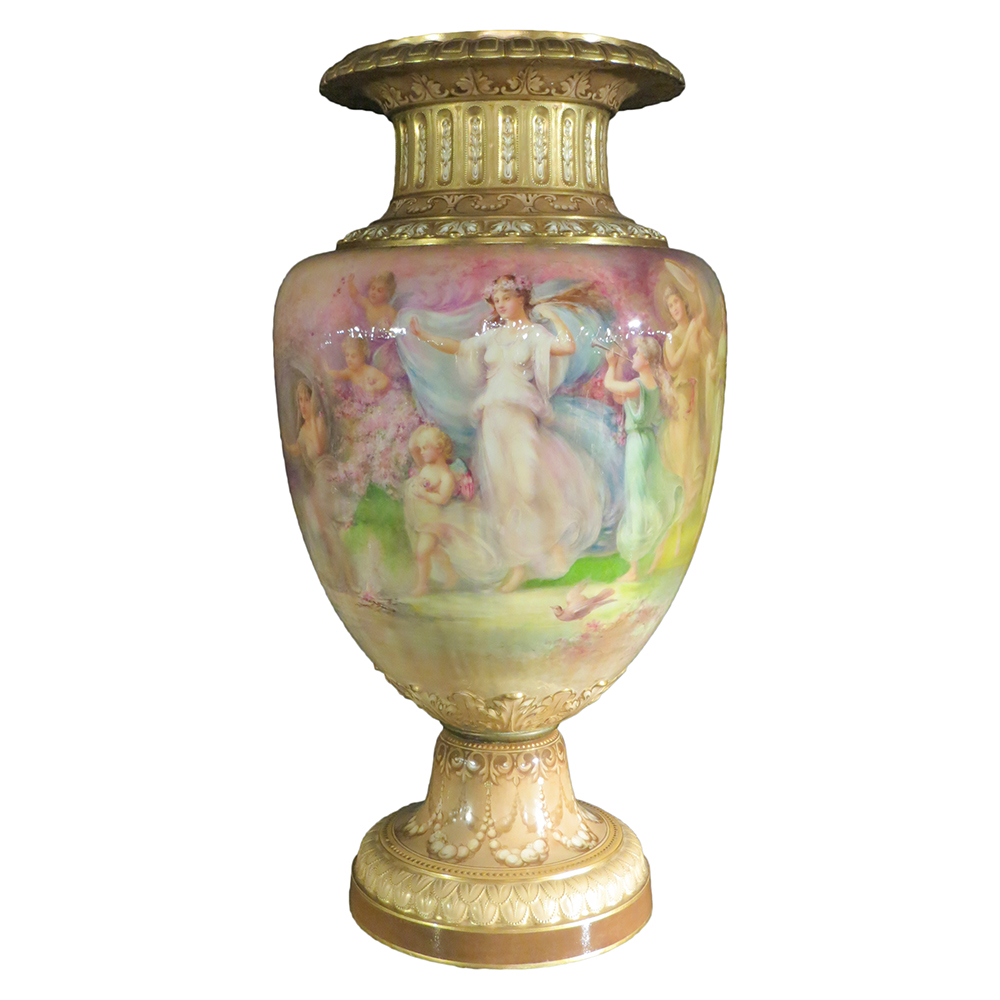
Doulton Burslem Coming of Spring by G. White
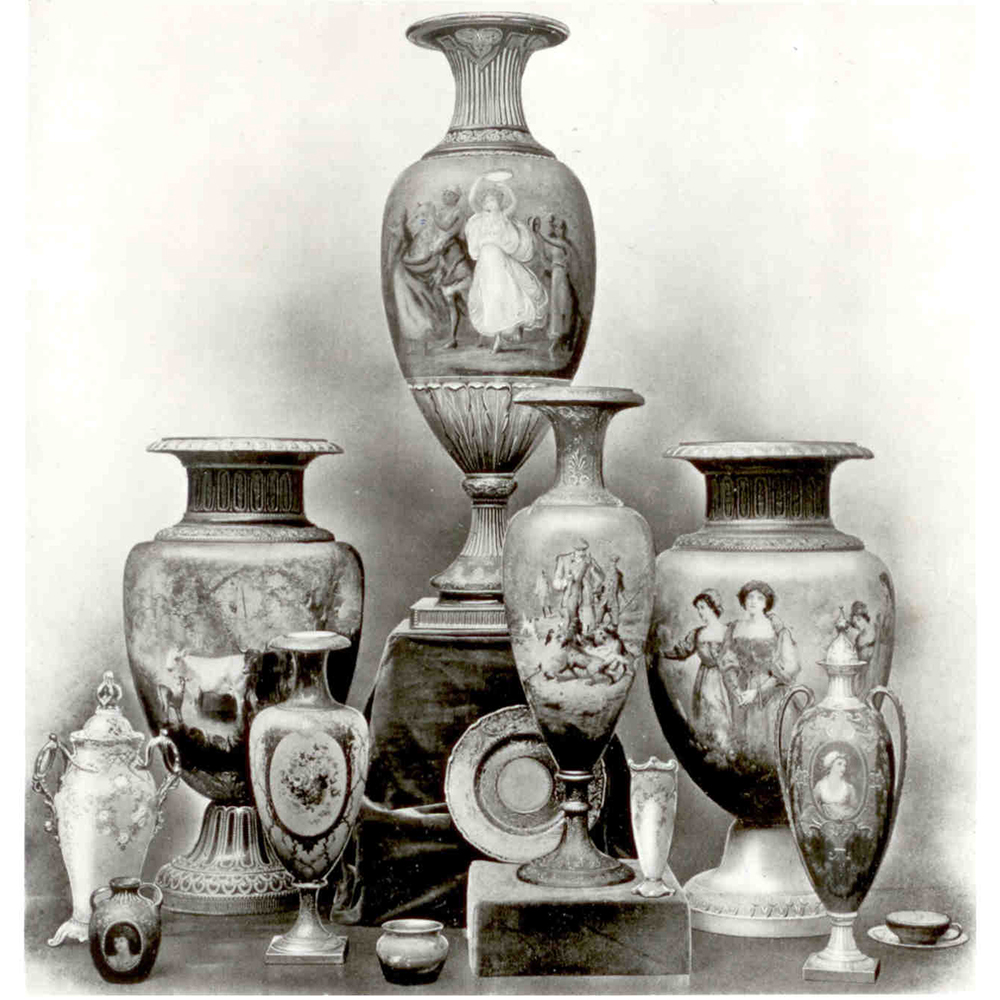
Art Journal 1908

Muriel on Aynsley Plate by G. White
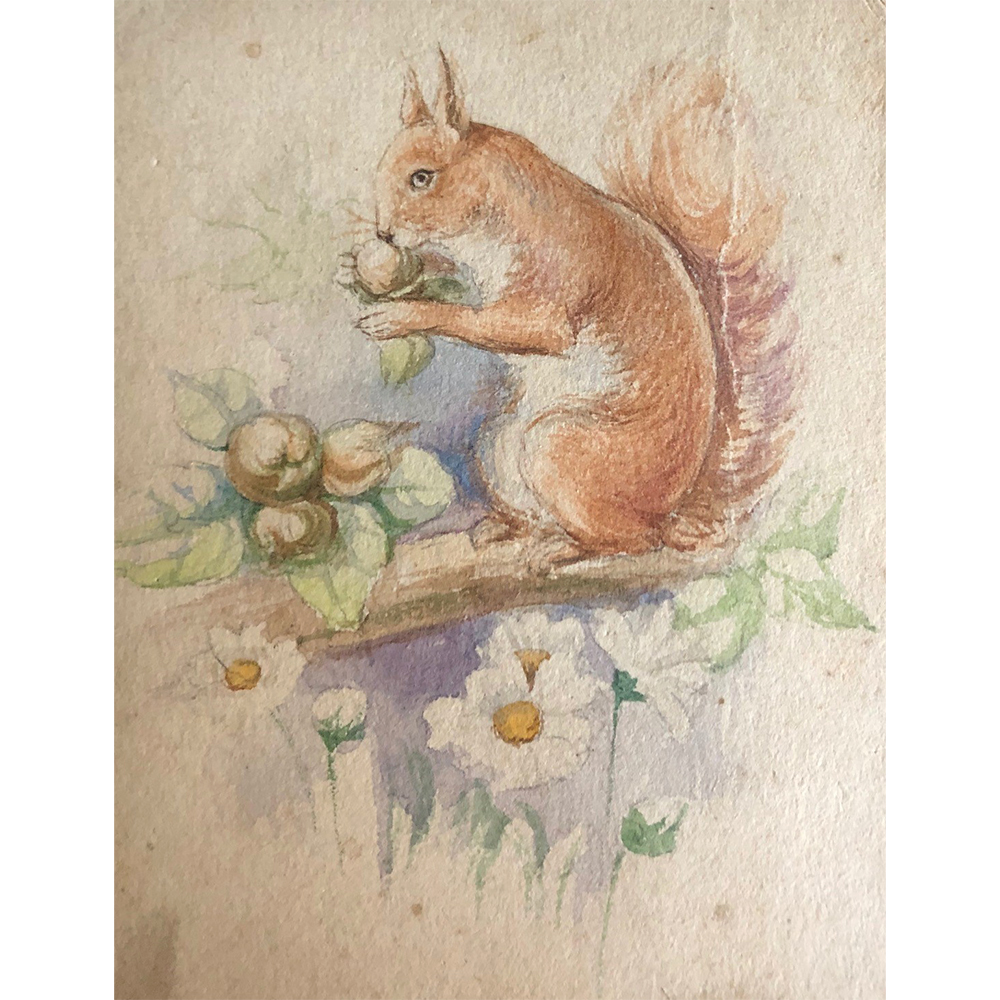
Squirrel Watercolor by G. White

New Zealand Postage Stamp
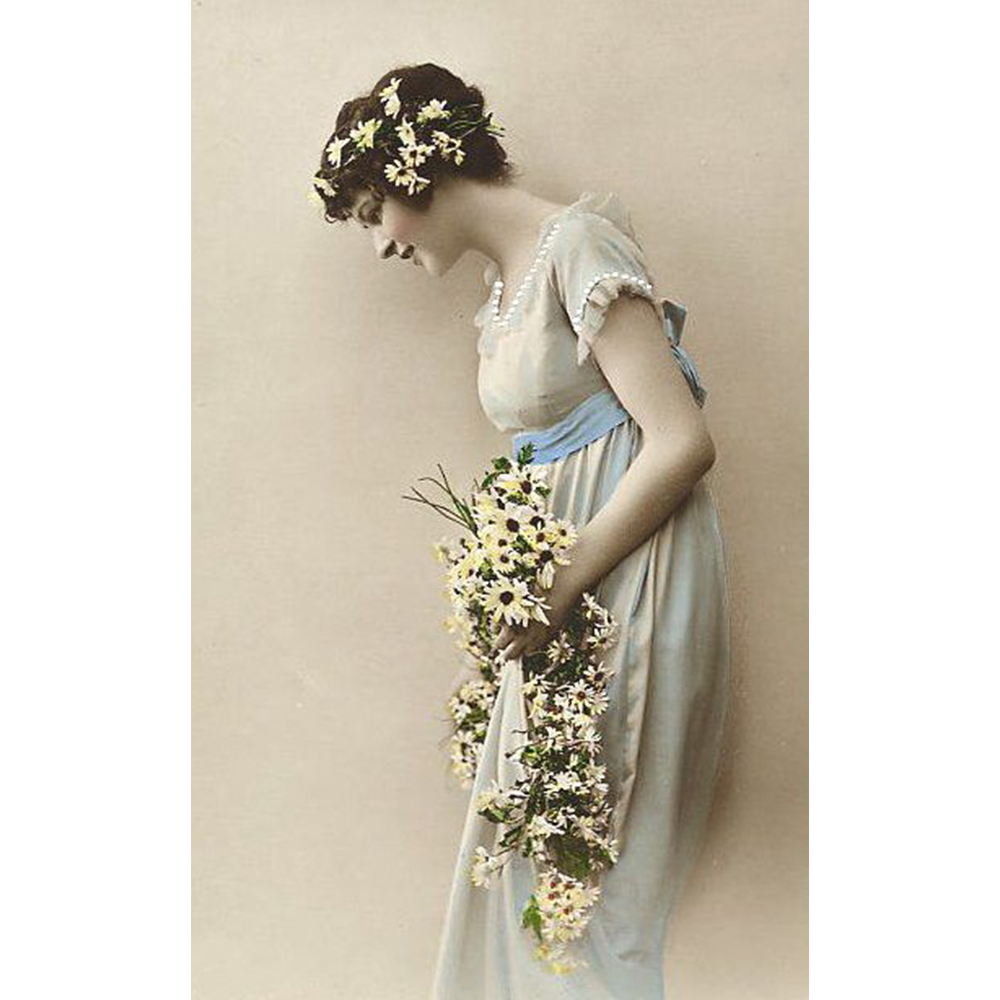
Maiden with Flowers Inspirational Photograph
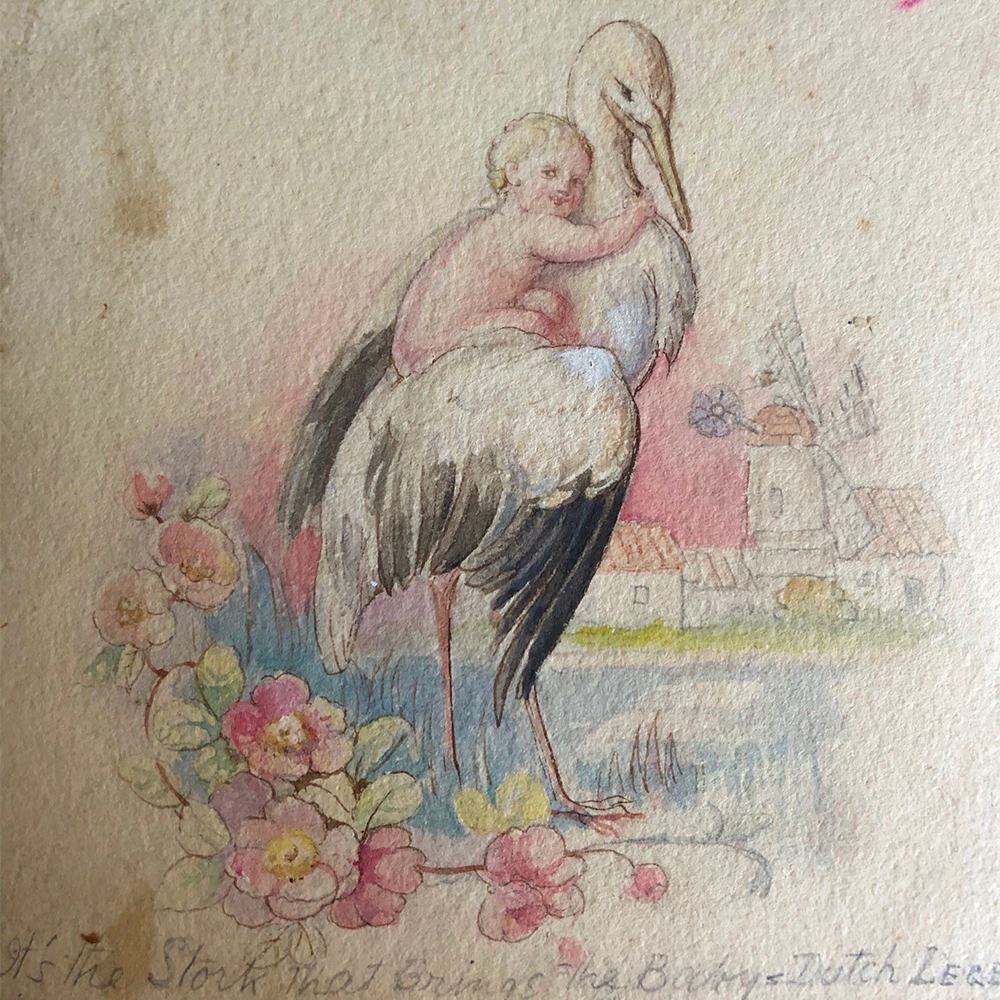
Stork Watercolor by G. White
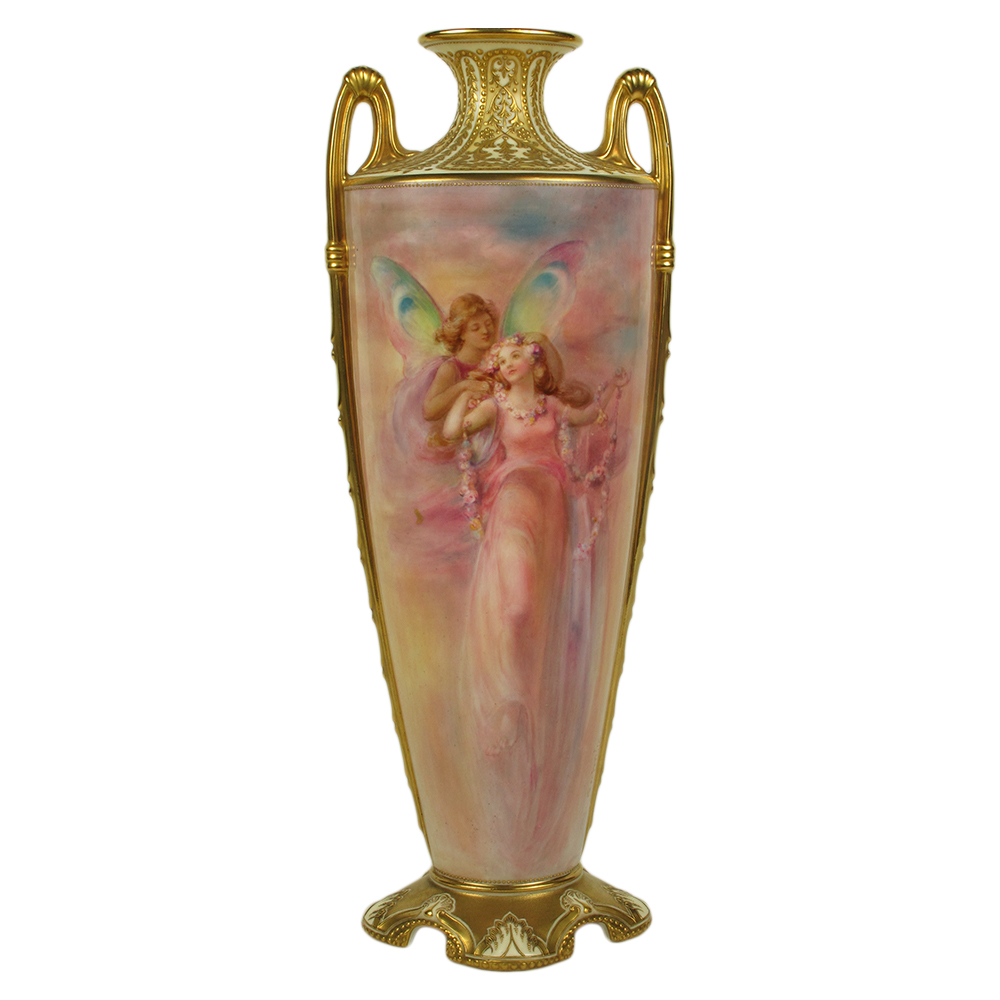
Royal Doulton Zeyphyr Wooing Flora by G. White
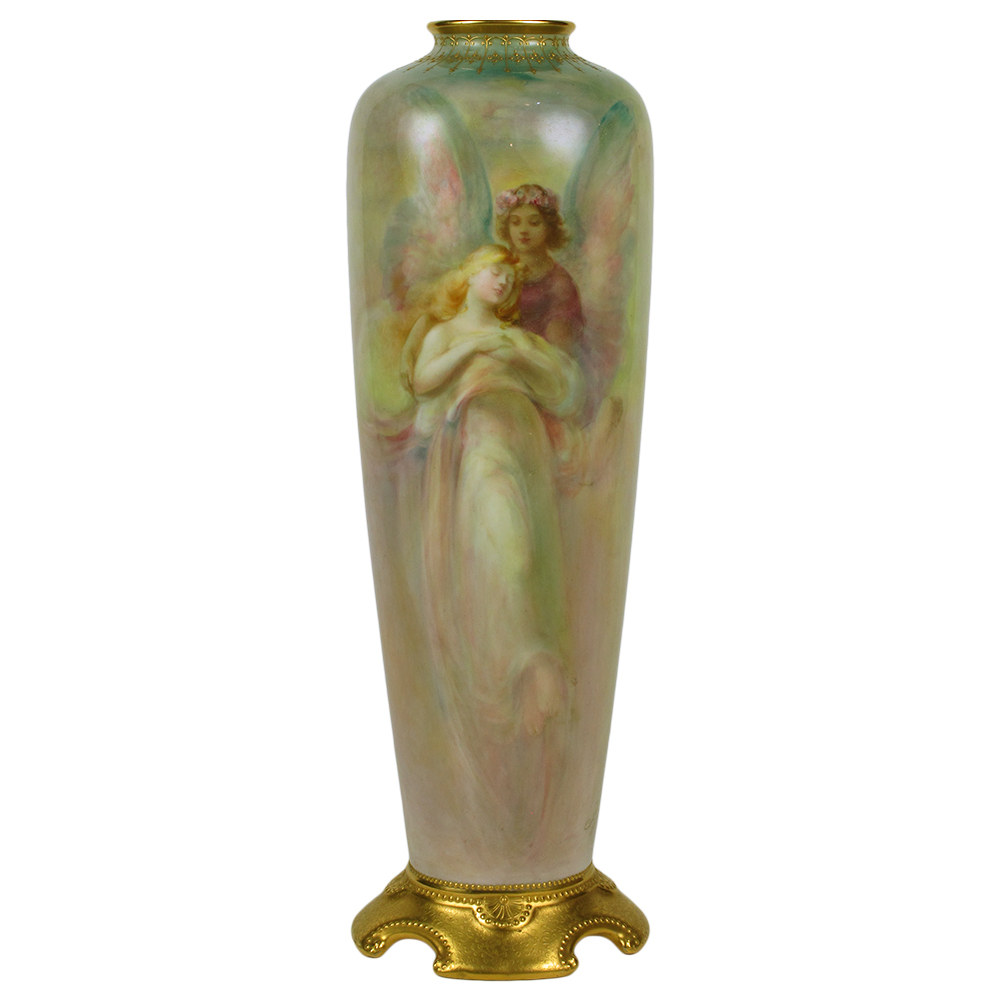
Royal Doulton Cupid & Psyche by G. White
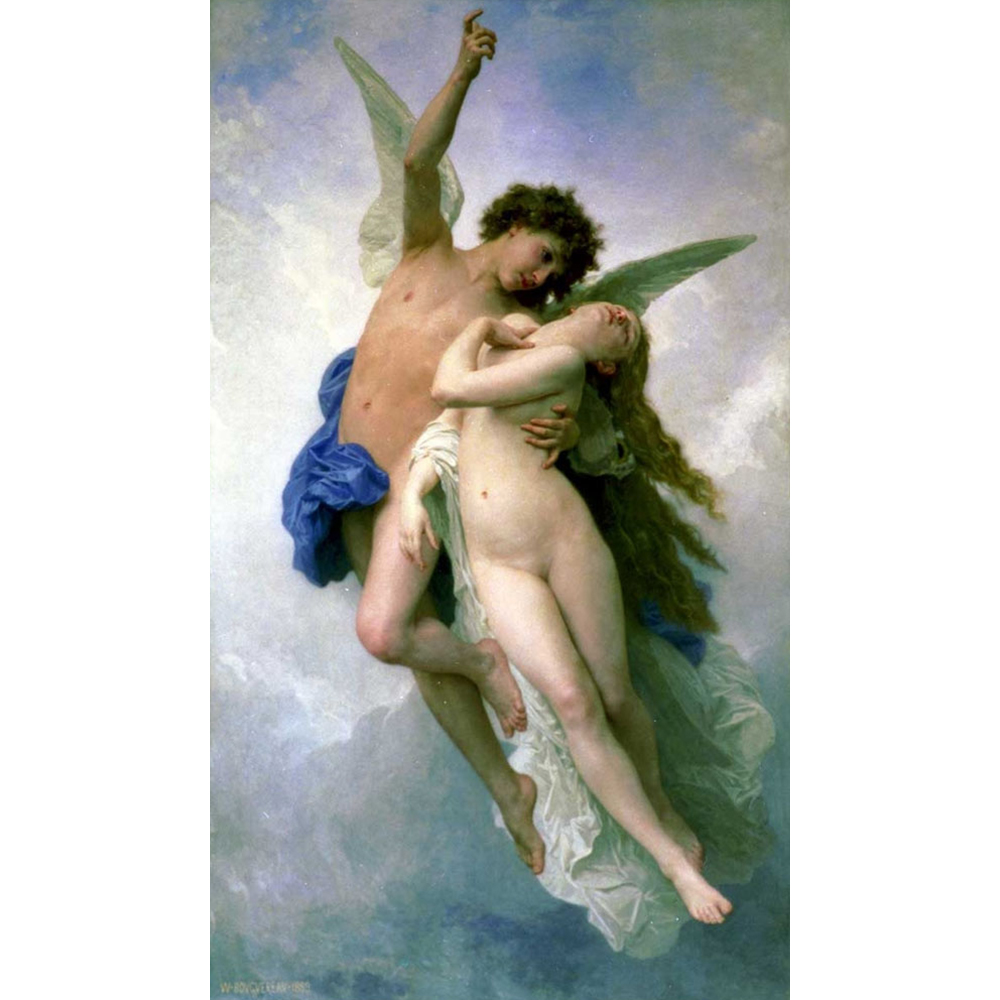
Cupid & Psyche by W.A. Bouguereau
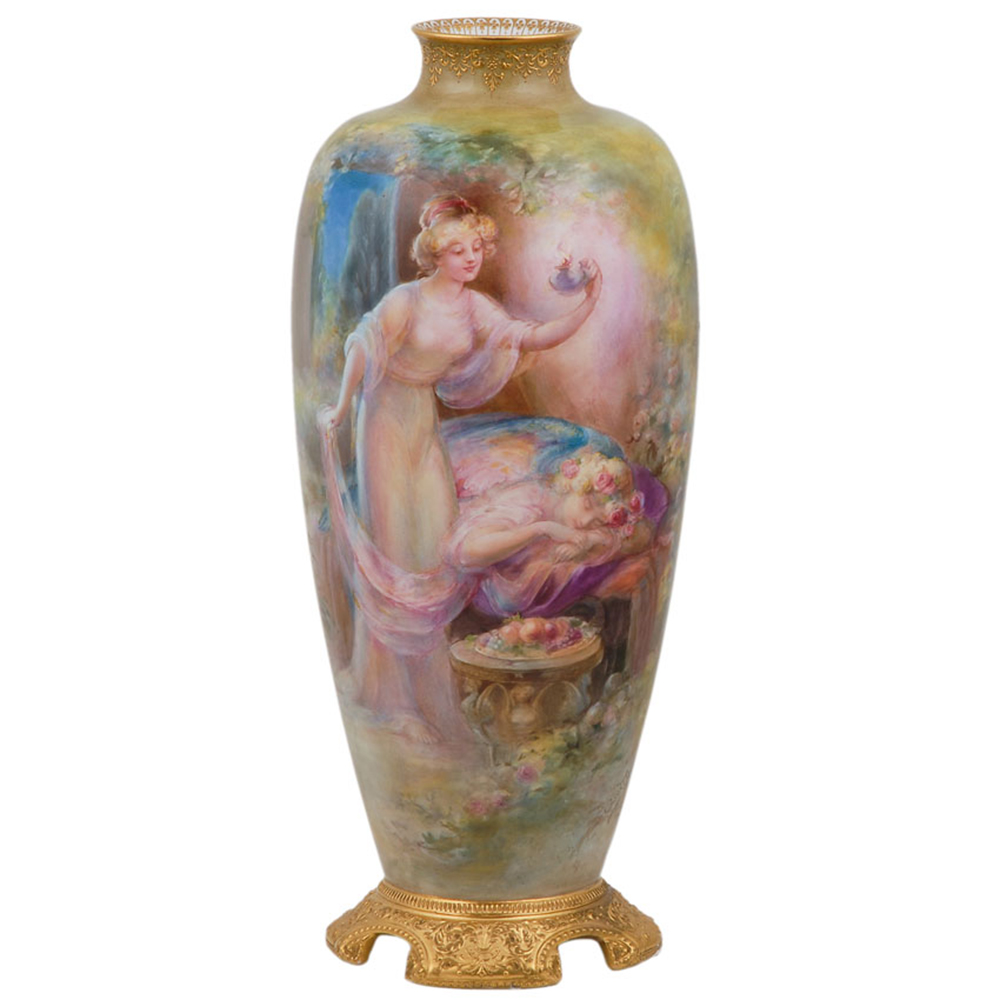
Royal Doulton Psyche & Cupid by G. White
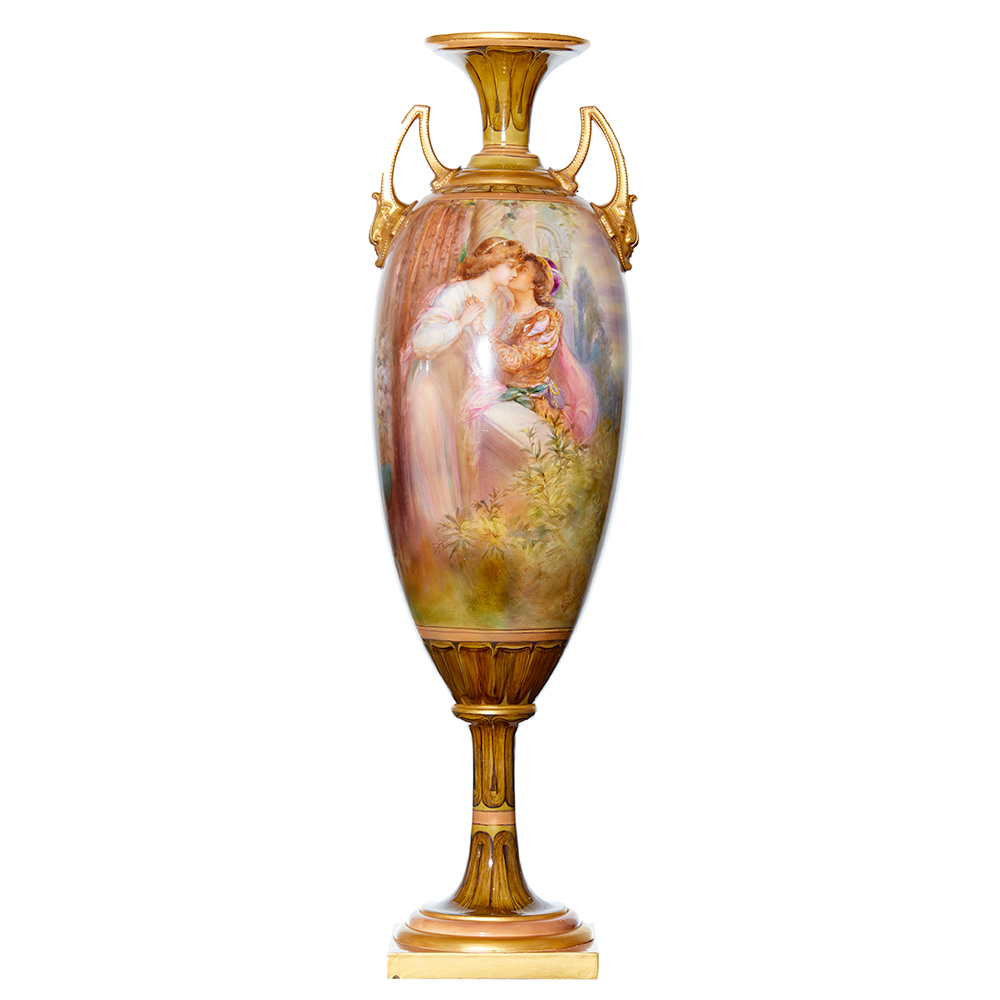
Royal Doulton Romeo & Juliet by G. White
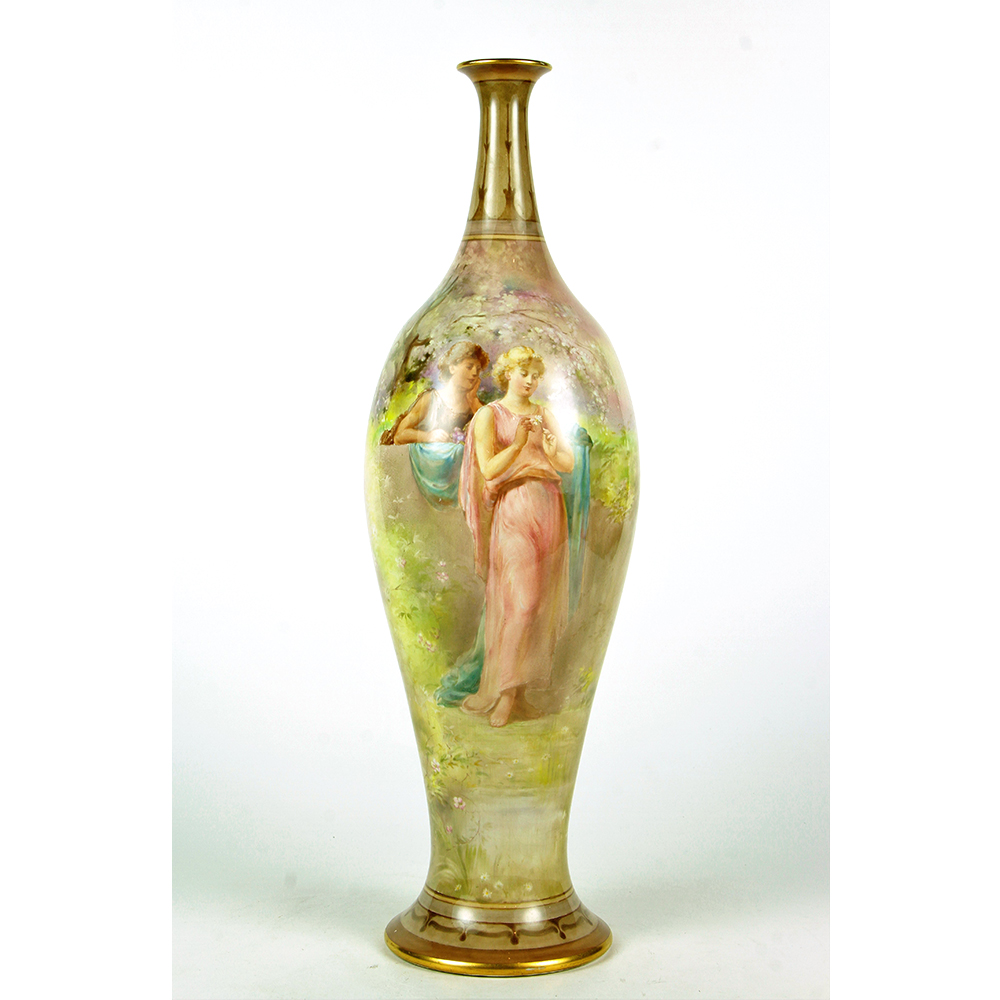
Royal Doulton He Loves Me, He Loves Me Not by G. White

Royal Doulton Sea Shells by G. White
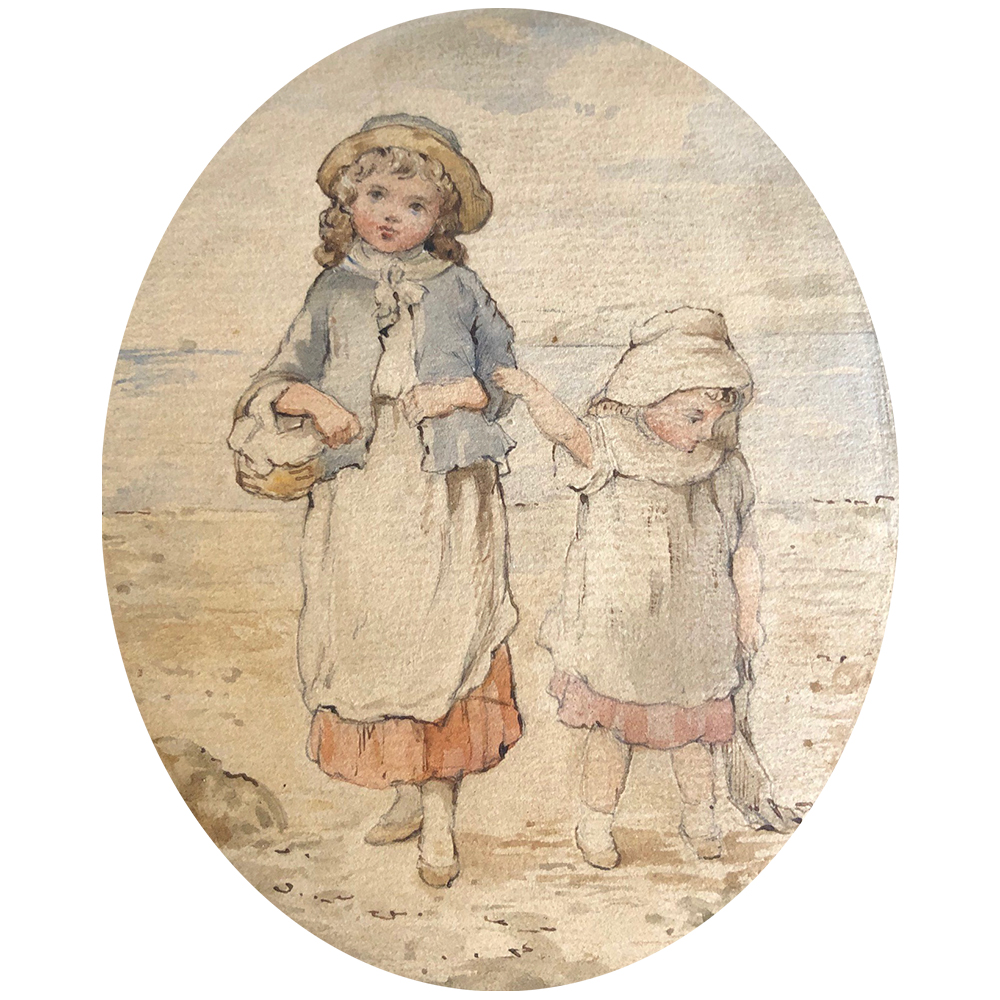
Children Watercolor by G. White
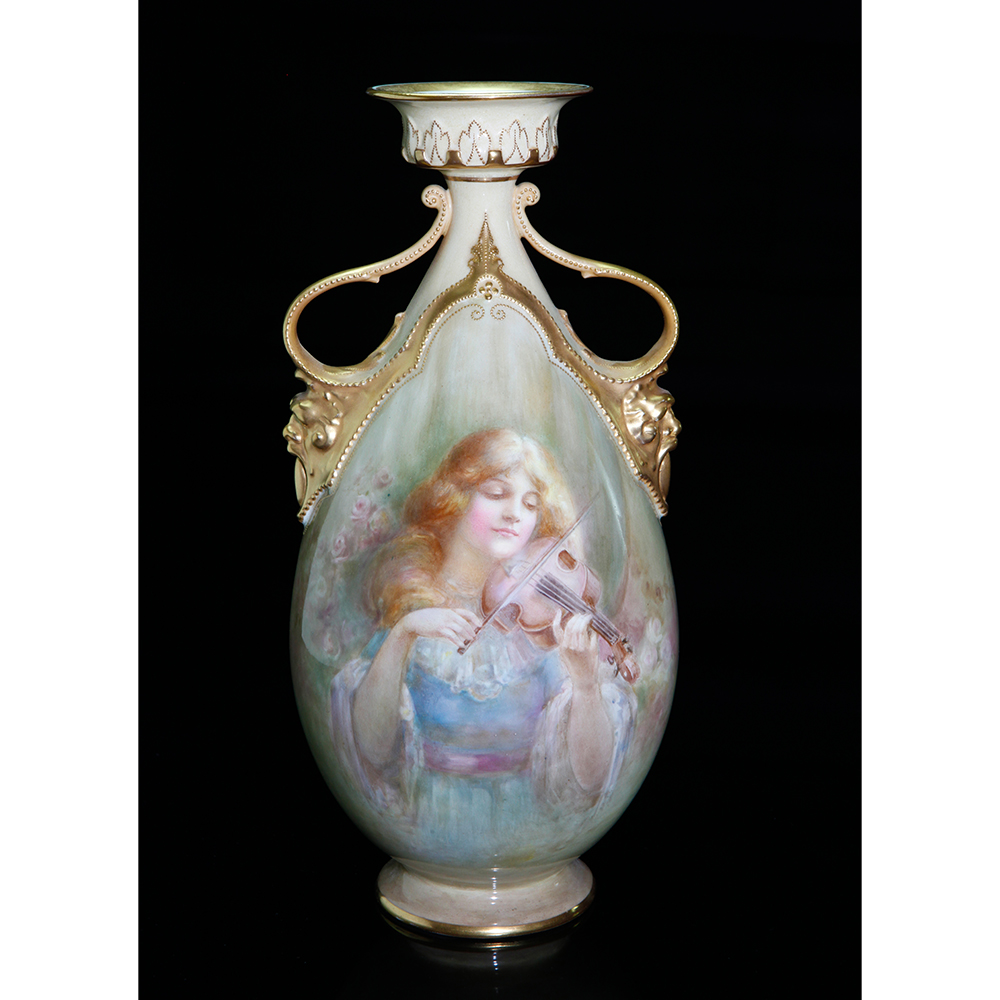
Royal Doulton Violin by G. White
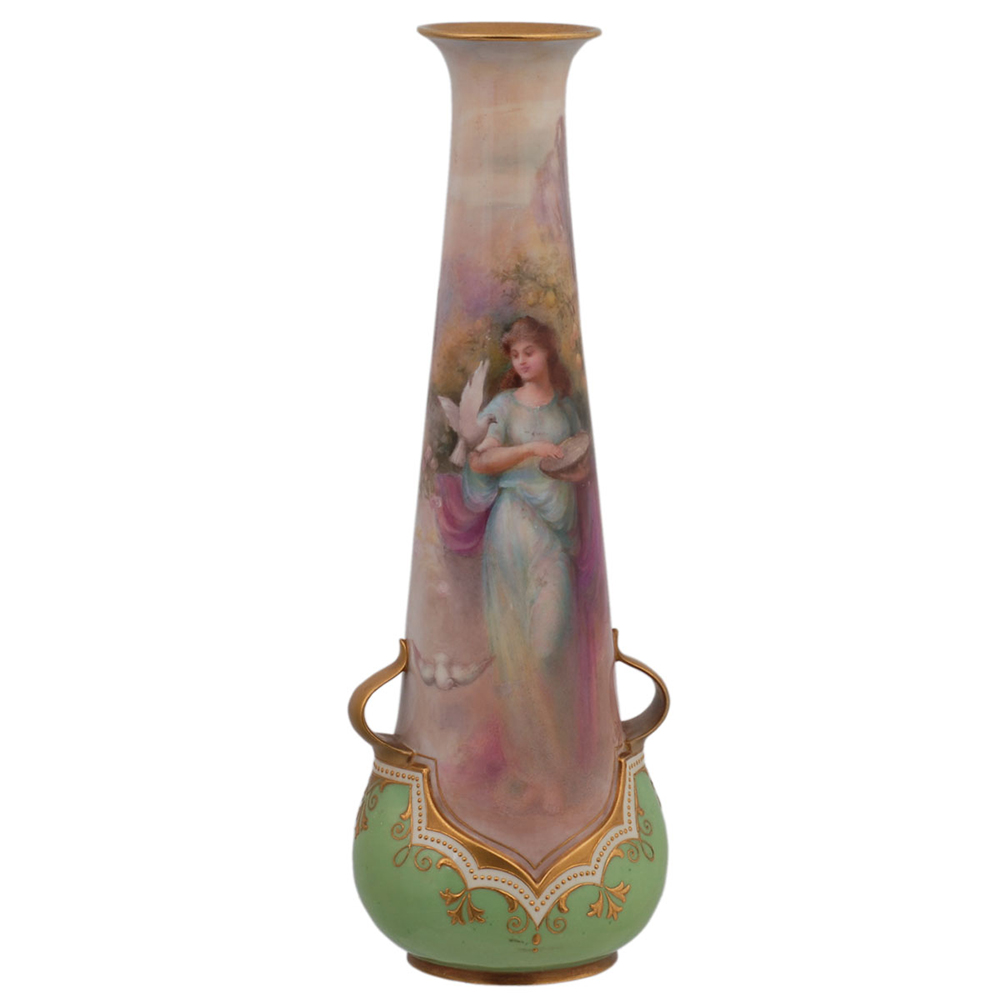
Royal Doulton The Pets by G. White
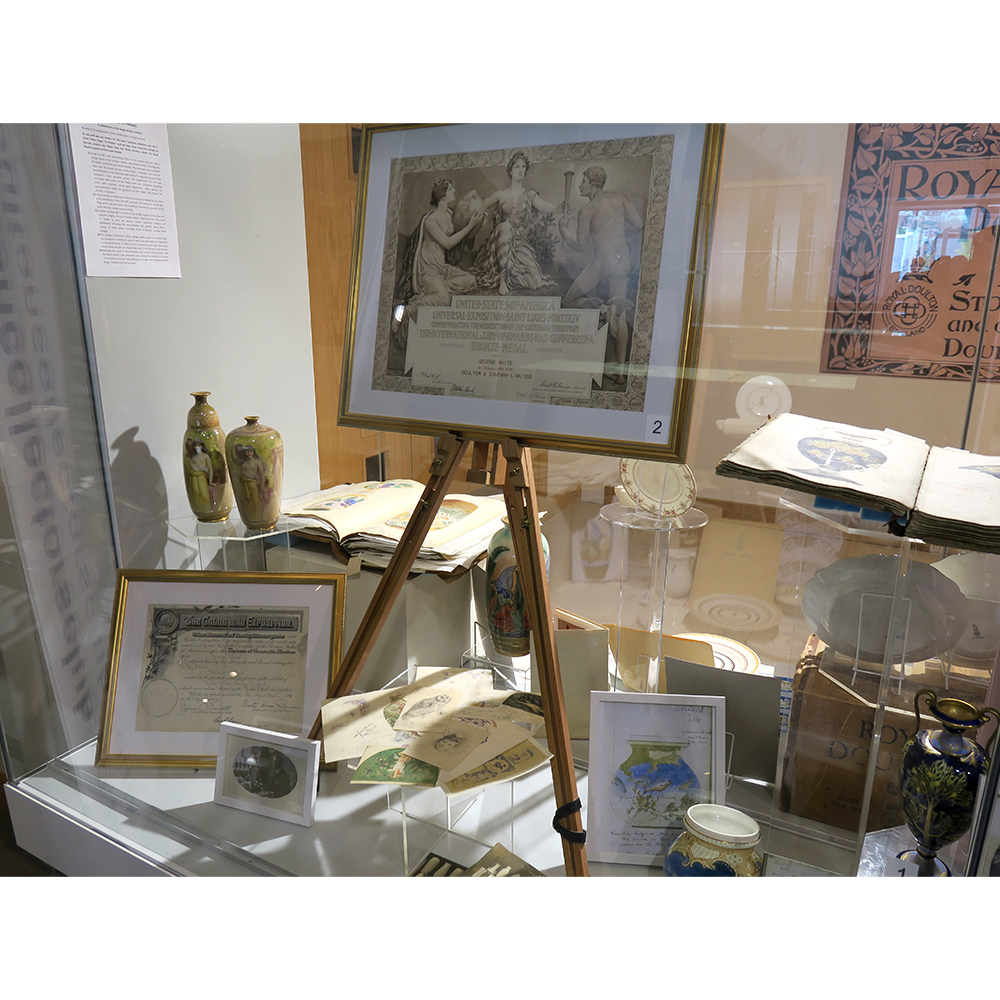
The George White Exhibit at the Paper to Pottery exhibition

Royal Doulton The Dove by G. White
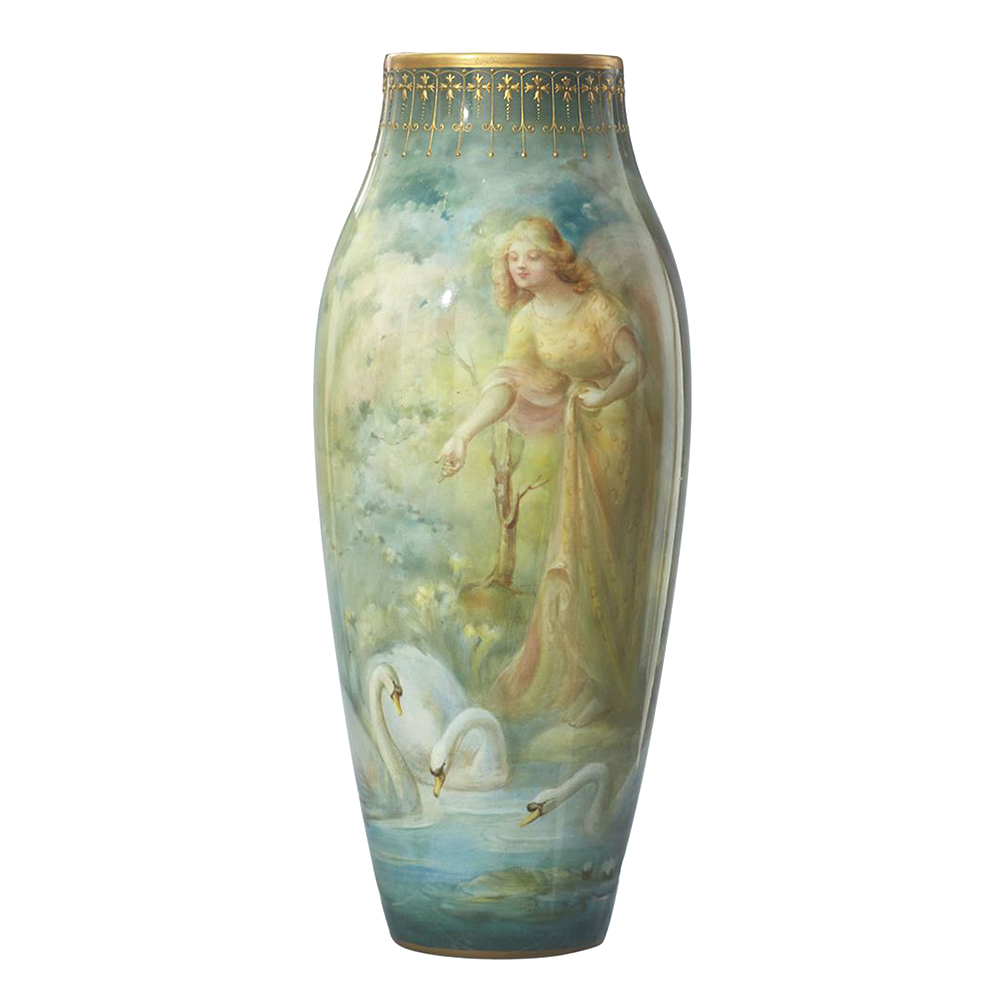
Royal Doulton Feeding the Swans by G. White

Gibson & Sons Maiden with Swans by G. White
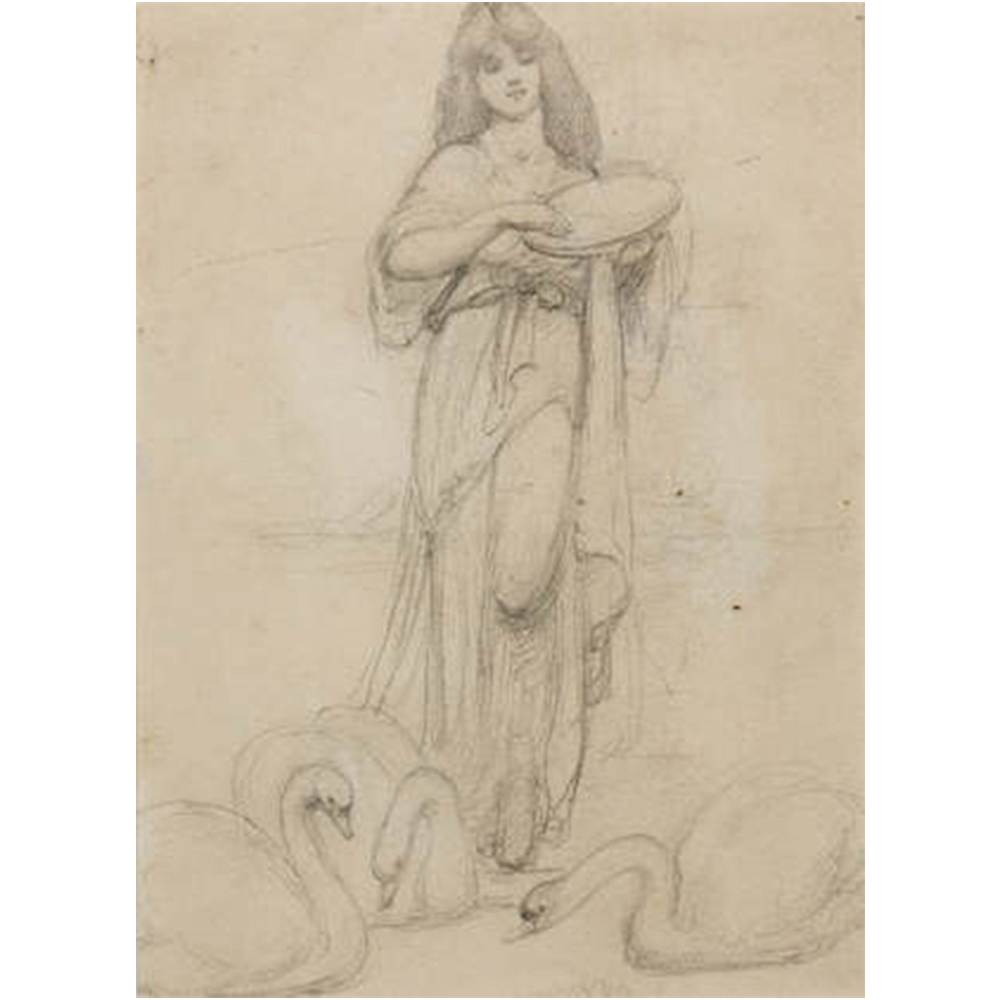
Maiden with Swans by G. White

Royal Doulton Summer Roses by G. White
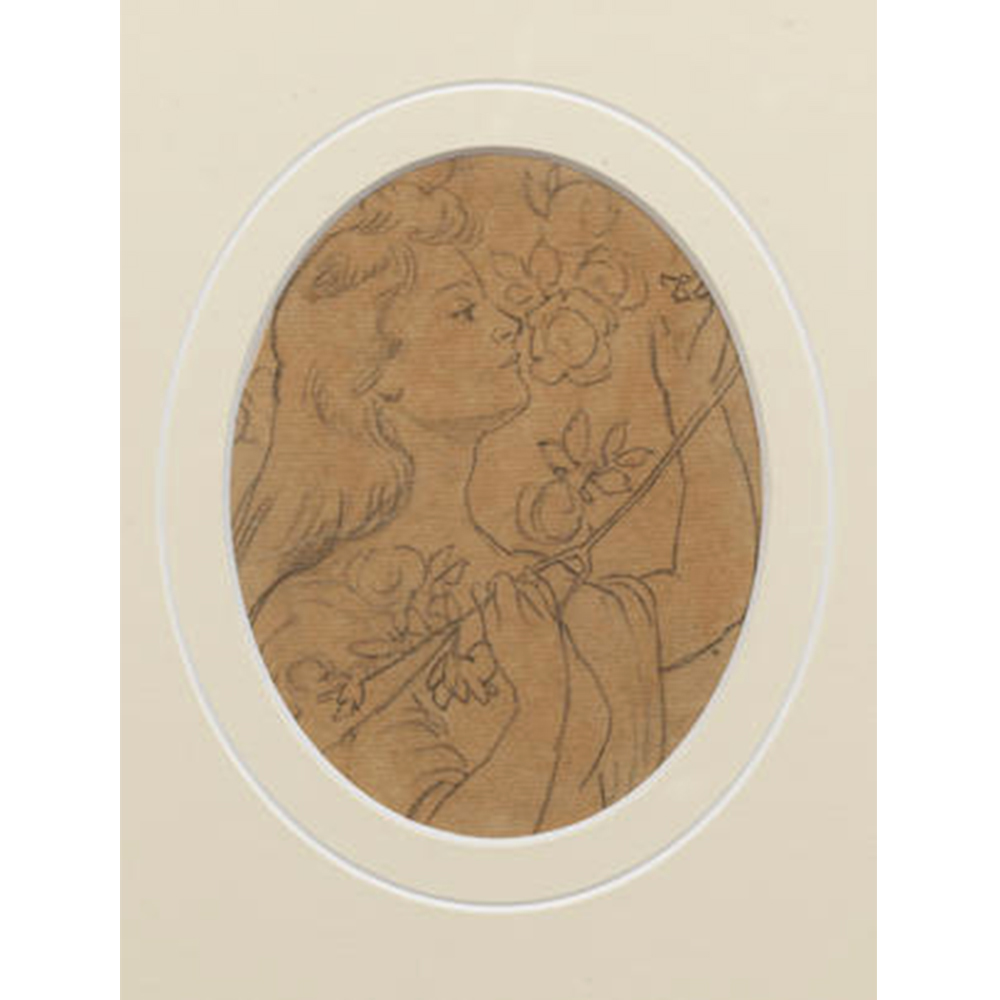
Summer Roses Drawing by G. White
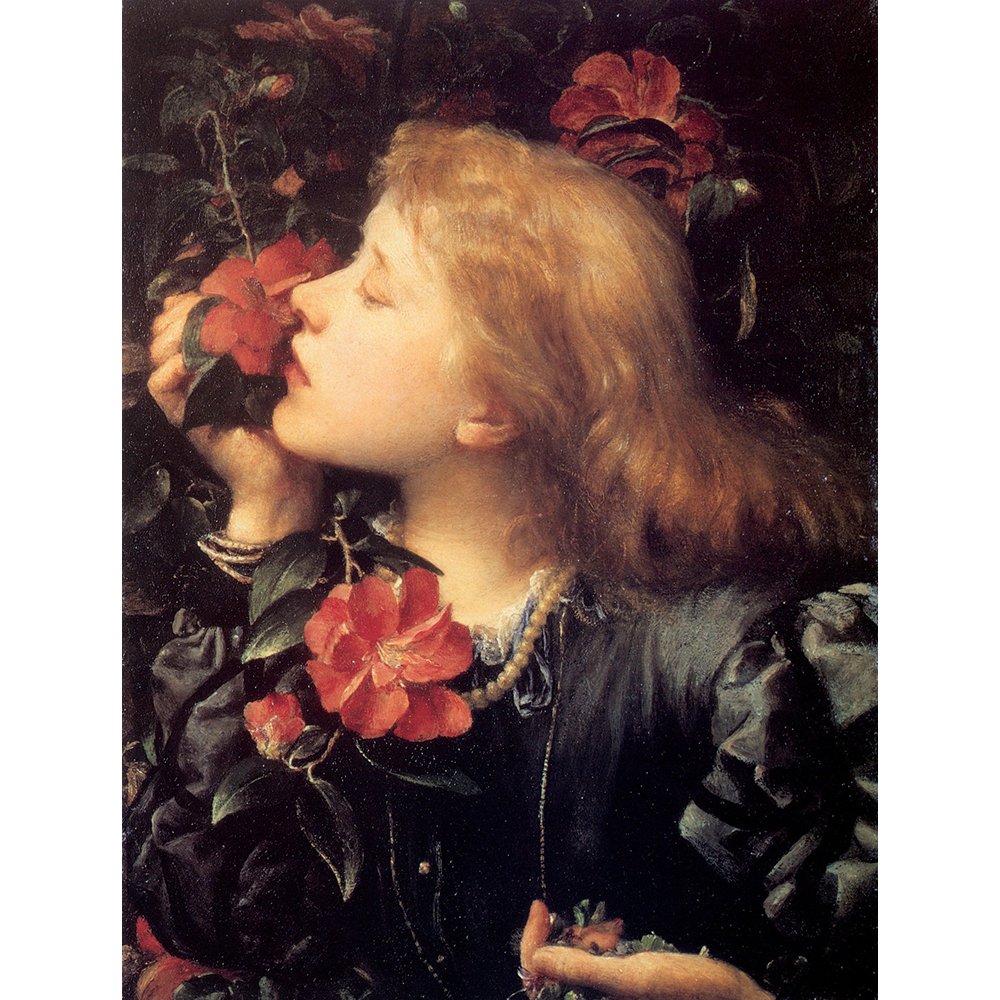
Ellen Terry by G.F. Watts

Royal Doulton The Bard by G. White

Royal Doulton The Bard by G. White
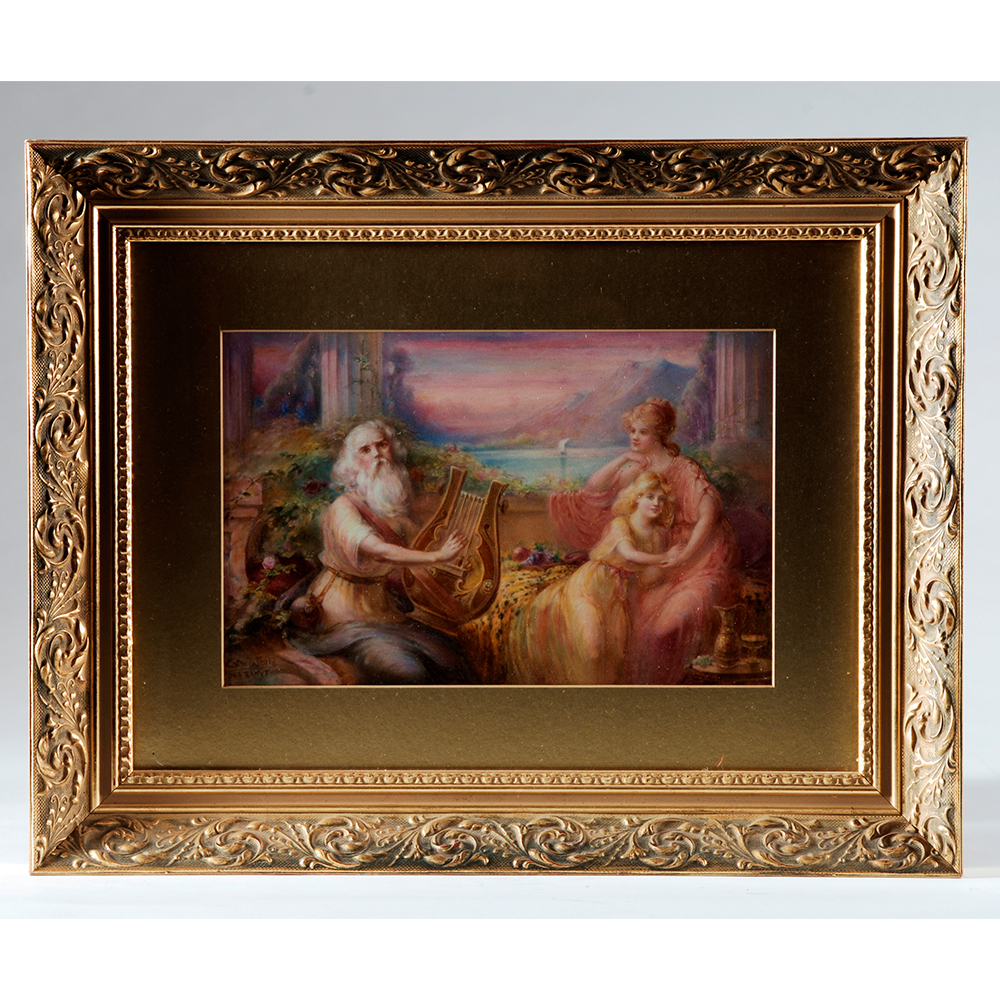
Royal Doulton The Bard Plaque by G. White
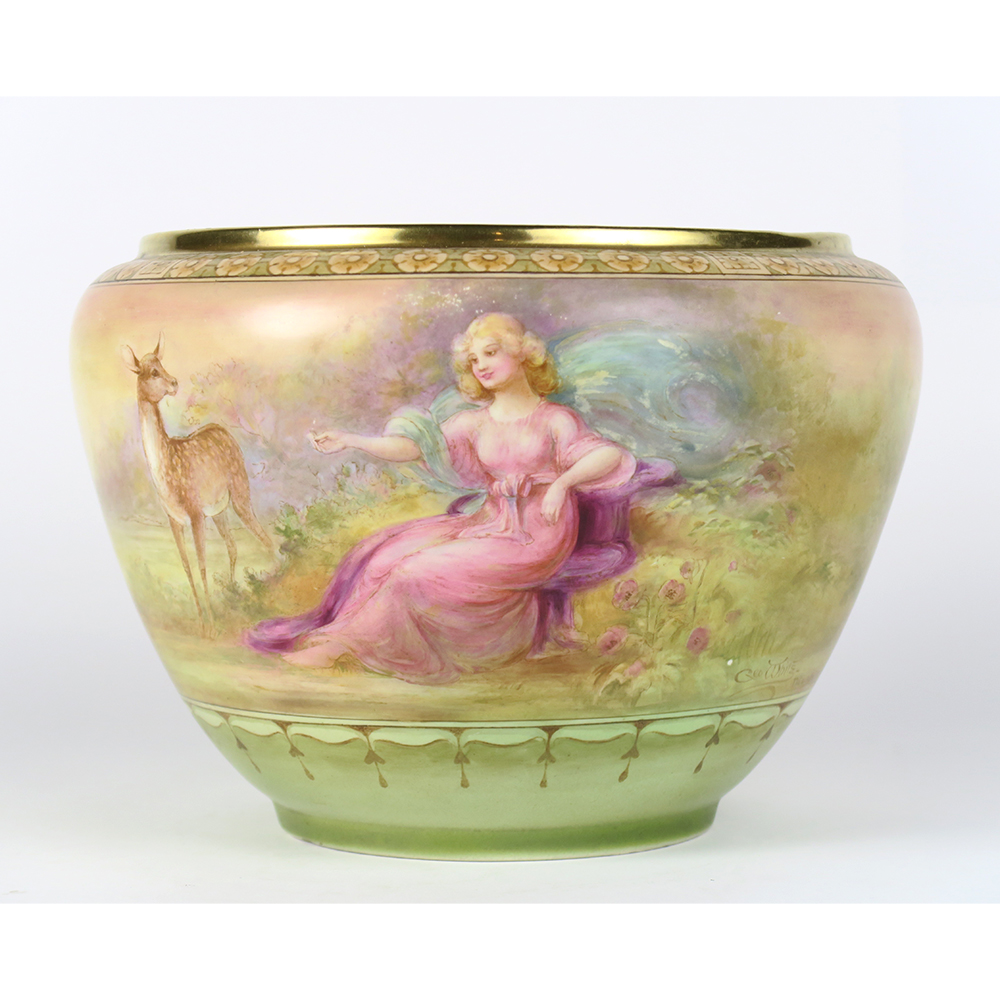
Gibson & Sons Maiden with Deer by G. White

Gibson & Sons Fairy by G. White
